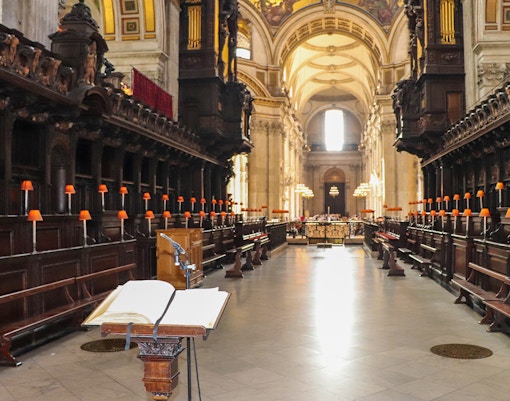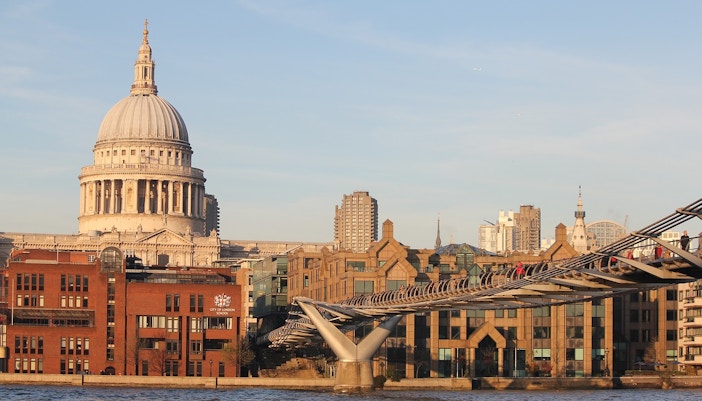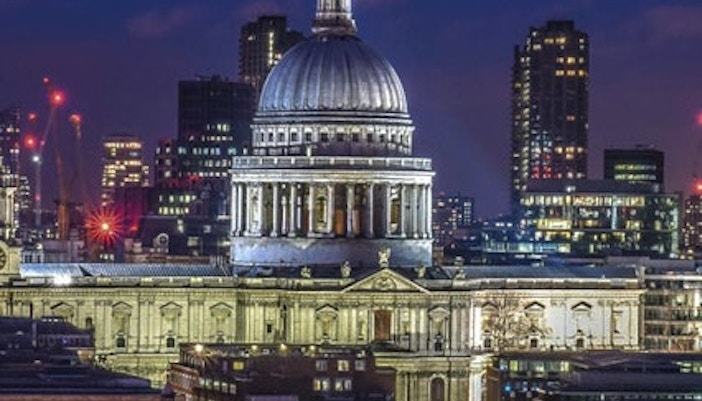The West Front of St Paul's Cathedral is distinguished by a grand portico supported by towering columns, leading to an upper colonnade and a detailed pediment. This pediment features Francis Bird’s bas-relief, The Conversion of St. Paul. Above, the statues of Saints Paul, James, and Peter adorn the facade, complemented by two imposing bell towers.






























